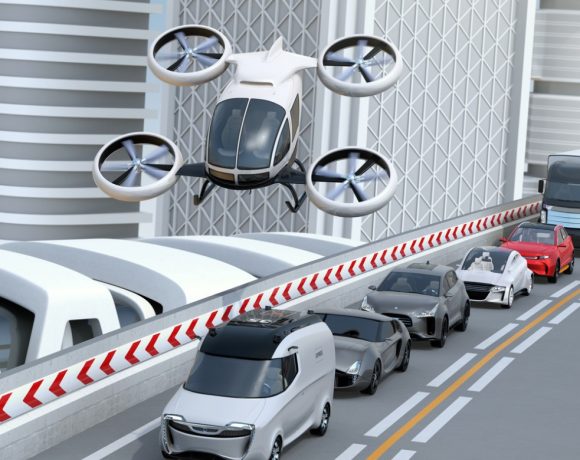- The biggest deterrent to mass EV adoption in the country is the price of EVs (especially four wheelers). The high cost of EVs are largely due to the cost of Lithium-ion (li-ion) batteries on which they run. Li-ion batteries are made up of resources such as lithium, magnesium, cobalt, etc that are expensive, not available in India, and imported at a great cost from other countries.
- To reduce the dependency on imports, batteries from electronic waste (e-waste) and EVs in times to come need to be recycled. Laptops and cell phones batteries have raw materials such as nickel, cobalt and lithium in them, which are the materials required for manufacturing li-ion batteries.
- Li-ion batteries are in a very mature stage of development globally. However, alternative battery chemistry could be very useful. Concrete efforts need to be put into R&D around the newer materials and how soon they can be commercialised.
Achieving 30% electric vehicle (EVs) penetration by 2030 is no small feat. To achieve this, the Indian government is giving a strong push to EV adoption with subsidies and tax exemptions to manufacturers and consumers alike. The infrastructure required for the EV ecosystem is well under way. However, the biggest deterrent to mass EV adoption in the country is the price of EVs (especially four wheelers) in comparison to ICE (internal combustion engine) vehicles. The high cost of EVs are largely due to the cost of Lithium-ion (li-ion) batteries on which they run. Li-ion batteries are made up of resources such as lithium, magnesium, cobalt, etc that are expensive, not available in India, and imported at a great cost from other countries. Given this challenge, will India be able to achieve its target EV penetration?
A conversation with Dr. Prabhjot Kaur, the CEO of the Centre for Battery Engineering and Electric Vehicles (CBEEV), proved extremely insightful. Prabhjot gives us an accurate summary of the state of battery manufacturing in India and the probability of success of 30% EV adoption.
Tell us about your journey in the field of battery technologies.
Around six years ago, I was working with a group of researchers on developing highly efficient solar systems. At the time, India had around 25 million off-grid homes. Most of the solar technologies in the country were imported ones, and were not suitable for implementation in Indian conditions. Most off-grid homes in India consume very little power. The technologies imported into the country, on the other hand, operated better on higher loads. The widely installed systems in the country had huge losses, had lots of electrical conversions before the solar generated electricity could reach the consumption ends. These huge losses caused installation of higher capacity systems at three times their consumption capacity.
To curtain these losses, we helped design a complete DC (direct current) system, as they better support energy distribution to largely increasing DC Loads, amounting to low power consumption. We also had to ensure that the batteries used could hold enough power to work at night, as our initial target was electrification of Off-Grid homes. But the Lead Acid batteries made the whole system bulky and difficult to transport to rough terrains. That was when we started thinking about alternate battery systems. From lead acid, we turned our attention to Lithium-ion (li-ion).
As we started developing li-ion batteries in the country, a number of vehicle manufacturers started approaching us to see if we could develop it for them. There was a lot of curiosity around li-ion batteries and their potential. We then started researching and developing li-ion batteries for electric vehicles. About three years back (in 2016), we formally set up the R&D Centre known as Centre for Battery Engineering and Electric Vehicles. From five members in the Centre, we have now become a 130 member team looking at all the different aspects of EVs.
India has plans of increasing the manufacturing of li-ion batteries in the country. But the raw materials to manufacture them are expensive and have to be imported. How can we achieve this in a cost effective way?
To reduce the dependency on imports, we could try recycling batteries from electronic waste (e-waste) and from EVs in times to come. We are using laptops and cell phones batteries that have raw materials such as nickel, cobalt and lithium in them, which are the materials required for manufacturing li-ion batteries. If we can take out raw materials from discarded electronics to make the vehicle batteries, and recycle and recover the vehicle batteries too, we can generate a lot of materials within the country, and do the same by importing battery wastes from other countries. This type of urban mining can help us get raw materials in continuation. These materials are not only cheaper, but are also more refined and highly secure.
Currently, the recycling is happening at a very small scale. Policy implementations are required for ensuring the regulation of e-wastes. The right policies will ensure that battery sellers and consumers use their batteries carefully so that they are recycled.
Do you think it would be possible to manufacture lithium-ion batteries on a scale large enough to achieve the target of 30% EV penetration by 2030?
If we put in consistent effort, this is very much achievable. We may not be strong on raw materials yet, but we are doing well in the manufacturing of battery packs. Today, it is cost effective to produce battery packs in the country. There is a huge interest in setting up plants for manufacturing batteries. Our Centre, CBEEV has also given the technology license to about three big players in the country, who are preparing to manufacture them extensively.
What are your thoughts on the government’s decision to explore Polymer based solid state batteries as an alternative to li-ion batteries?
Battery cells play a very important role. And we do not have the production in the country yet. Even if there are good players focusing on cell production, it will take them a year or two to achieve production results. It takes time to set up the plant, import raw materials, and do processing, testing, etc. Li-ion batteries are in a very mature stage of development globally. However, we cannot ignore that alternative battery chemistry could be very useful. We need to see how soon they can be commercialised. We have to put in concrete efforts into R&D around the newer materials.
What do you think we require to build up the R&D capacity in the country?
We need resources, money, and infrastructure. As far as resources are concerned, we do not need to invest much as the intelligence for battery technology research cannot be created overnight. We have people who have been working for decades together in this domain. We need to support them and any group or scientific organisation that’s into the R&D of materials and wants to build a good product out of it. It could be an alternative battery or even an alternative li-ion chemistry. If it is li-ion chemistry and we know the formula in house (so far we don’t know the formula for successful commercialisation in-house), we should be developing a good product out of it.
Can global players contribute in any way, especially in R&D in battery technologies?
Certainly they can. Cell technology is a good example of an area for R&D where global players can contribute. Sustainability is a common problem for mankind. These are problems that all of us need to address together. R&D should be developed independently, without too many legal or bureaucratic hurdles. If we can devise a method to ensure that IP and legal right infringements are not violated, and we agree that the outcomes from the research will be for the benefit of everyone, then working together can yield great results. I think we should all work together for better and cleaner technologies.






Hunter
2 October
I have high hope that solid-state batteries are the future. Solid-state batteries are more stable and safer than current batteries.